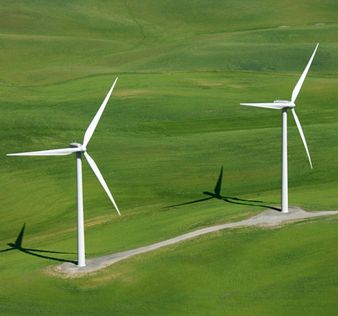 Although British Columbia is better suited than most places in the world for large-scale wind energy development, the Canadian province has just 250 MW of installed capacity. However, its wind profile has the potential to change dramatically, according to the Canadian Wind Energy Association (CanWEA).
Although British Columbia is better suited than most places in the world for large-scale wind energy development, the Canadian province has just 250 MW of installed capacity. However, its wind profile has the potential to change dramatically, according to the Canadian Wind Energy Association (CanWEA).
During the opening general session at CanWEA's 27th Annual Conference and Exhibition, held in Vancouver, the association called for the development of 5,250 MW of installed wind capacity in the province by 2025.
CanWEA's plan outlines British Columbia's significant wind energy advantage, as well as the resulting economic, social and environmental benefits that can be realized with a stable and supportive policy environment. CanWEA estimates that the share of wind energy as a percentage of total generation in the province can increase from the current 1% of electricity demand it fulfills to 17% – or 5,250 MW – by 2025.
‘It's an ambitious goal, but it is feasible,’ said Robert Hornung, CanWEA's president.
If the province can meet this target, British Columbia would potentially reap C$16 billion of investment, with more than C$3.7 billion of direct benefits to British Columbia communities during the construction phase alone, according to CanWEA.
"British Columbia is blessed with a world-class wind resource, which can power the province with emissions-free electricity while also creating jobs and delivering local benefits," Hornung said.
British Columbia currently ranks sixth in Canada in installed wind energy capacity. However, according to CanWEA, its standing will improve, as wind energy captured just under half of the successful bids in BC Hydro's 2008 clean power call. With six new projects coming online, British Columbia's installed wind energy capacity is expected to reach 784 MW by 2014.
Wind energy can also serve as a complementary resource in hydro-rich British Columbia, Hornung explained.
‘British Columbia gets the strongest winds in the winter months, peaking in the freezing months of December and January, just when stream flows are at their lowest,’ he said, adding that wind generation will greatly reduce the drain from BC Hydro's fixed reservoir capacity during the winter and spring months.
Wind power will also become increasingly necessary in British Columbia, as the province's population is expected to increase by 1 million over the next 20 years, thus increasing energy demand. According to CanWEA, the total projected electricity supply shortfall in British Columbia will be 23,600 GWh in 2025.
‘Not only can a lot of that electricity be produced by wind – it should be produced by wind.’
Although current electricity prices in British Columbia are relatively inexpensive, Hornung warns that the costs are sure to rise in the future.
‘The cost of electricity will be substantially higher than British Columbians have grown accustomed to paying for their heritage supply,’ he says. "As a source of new electricity supply, wind energy is a great deal.’



